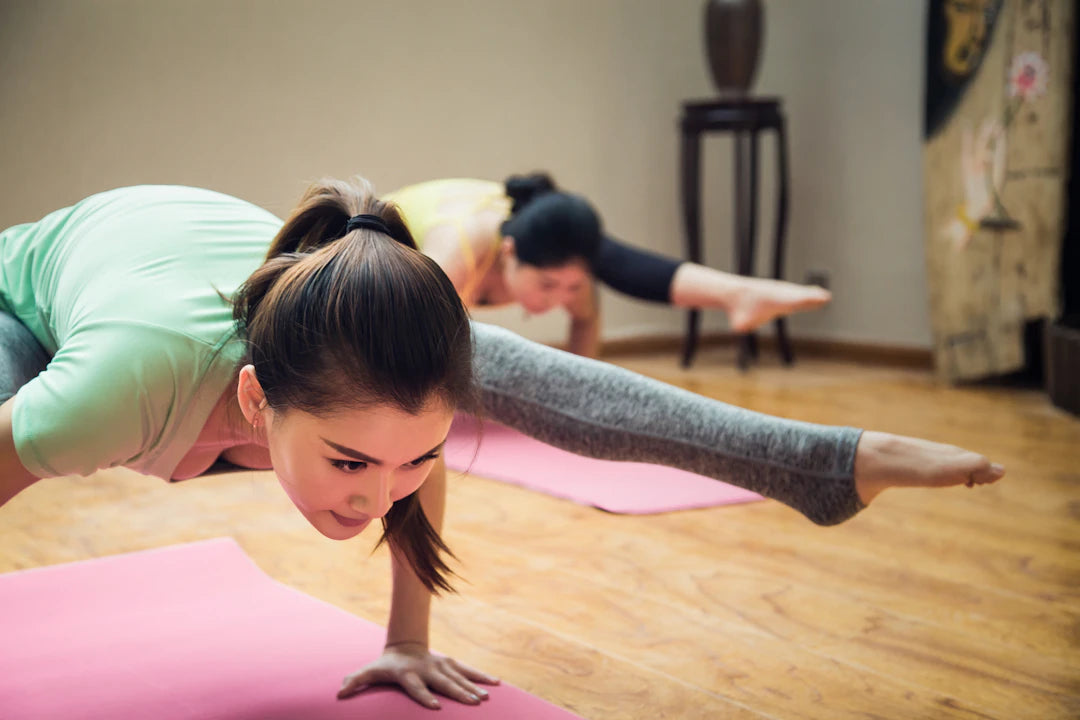
Joint-Friendly Routines to Enhance Flexibility
Share
Overview
This blog discusses the importance of maintaining joint flexibility and mobility, especially for older adults. It outlines joint-friendly routines that include warm-ups, gentle stretching, strength exercises, and balance techniques to enhance overall well-being. Additionally, it emphasizes the significance of a healthy diet, staying consistent with exercise, and listening to your body to support joint health.
Frequently Asked Questions
1. Why is joint flexibility important as we age?
2. What are some gentle exercises for improving joint flexibility?
3. How can I create a joint-friendly fitness routine?
4. What lifestyle choices support joint health?
5. How can I stay motivated to exercise regularly?
As we age, maintaining our mobility and flexibility becomes increasingly important for our overall health and well-being. Joint pain and stiffness can pose challenges that may deter us from physical activity, but it’s crucial to stay active, especially as part of a senior fitness routine. In this blog post, we’ll explore several joint-friendly routines that will not only enhance your flexibility but also help you lead a more active and fulfilling life. Let's dive in!
Understanding Joint Pain and Flexibility
Joint pain is a common issue for older adults, often resulting from wear and tear over the years, arthritis, or other conditions. This discomfort can lead to a decrease in physical activity, which in turn may contribute to reduced flexibility and further joint issues. Fortunately, there are safe and gentle exercises that can help ease discomfort and improve your flexibility.
Why Focus on Flexibility?
Flexibility is essential for several reasons, especially for older adults:
- Enhanced Mobility: Improved flexibility allows for easier movement, making everyday tasks like bending down to tie your shoes or reaching for high shelves simpler.
- Reduced Risk of Injury: Stretching and flexibility routines can help prevent injuries by preparing your muscles and joints for physical activity.
- Better Posture: A flexible body can improve your posture, which is vital in reducing strain on your joints and muscles.
- Boosted Circulation: Gentle movement stimulates circulation, helping to nourish your joints and muscles.
Establishing a Joint-Friendly Routine
Starting any new fitness regimen can be overwhelming, but breaking it down into manageable steps can make all the difference. Here are some tips to help you establish a joint-friendly routine that promotes flexibility.
Begin with Warm-Ups
Before you dive into stretching or more vigorous exercises, warm up your body. Warming up increases blood flow to your muscles and prepares your joints for activity. Here’s a simple warm-up routine you can follow:
- March in Place: Stand upright and march in place for 1–2 minutes. This gets your heart rate up and warms your legs.
- Arm Circles: Extend your arms out to your sides and make small circles for 30 seconds, then switch to larger circles for another 30 seconds.
- Neck Rolls: Gently roll your neck in a circular motion, clockwise for 30 seconds, then counterclockwise for another 30 seconds.
Gentle Stretching Routines
Once you’ve warmed up, incorporate gentle stretching into your routine. Here are three effective stretches designed for joint friendliness:
1. Seated Hamstring Stretch
This stretch focuses on the hamstrings and lower back while being gentle on the joints.
- Sit on the edge of a sturdy chair with your feet flat on the floor.
- Extend one leg straight out, keeping your heel on the ground and your toe pointing up.
- Gently lean forward from your hips until you feel a comfortable stretch in the back of your leg. Hold for 20–30 seconds.
- Switch legs and repeat.
2. Cat-Cow Stretch
This stretch is excellent for the spine and can help relieve tension in the back and neck.
- Begin on all fours with your hands below your shoulders and knees below your hips.
- On an inhale, arch your back (like a cow) and look slightly upward.
- On an exhale, round your back (like a cat) and tuck your chin. Repeat this cycle 5–10 times.
3. Quadriceps Stretch
This stretch targets the front of your thighs and enhances flexibility in your knees.
- Stand behind a chair for support.
- Bend one knee, bringing your heel toward your buttocks.
- Grasp your ankle with your hand and gently pull it toward you. Hold for 20–30 seconds, then switch legs.
Strengthening Muscles for Stability
Incorporating strength-building exercises into your senior fitness routine can improve stability and support your joints. Here are some simple exercises you can do at home:
Chair Squats
This exercise builds strength in your legs and glutes while being easy on the joints.
- Stand in front of a sturdy chair.
- Lower your body as if you are about to sit, but stop just above the seat.
- Hold for a moment, then stand back up. Repeat for 10–15 reps.
Wall Push-Ups
Wall push-ups are a gentle way to strengthen your upper body without straining your joints.
- Stand facing a wall, about an arm's length away.
- Place your hands on the wall at shoulder height.
- Bend your elbows and lean your body toward the wall, then push back to the starting position. Complete 10–15 reps.
Heel Raises
This exercise strengthens the calves, which is essential for balance.
- Stand with your feet hip-width apart and hold onto the back of a chair or countertop for support.
- Raise your heels off the ground and balance on your toes. Hold for a moment, then lower back down. Repeat for 10–15 reps.
Incorporating Balance Exercises
Balance is crucial as we age. Poor balance can lead to falls and injuries, making balance exercises beneficial for a senior fitness routine. Below are a few gentle techniques to enhance your balance:
Single Leg Stands
This simple exercise can be done anywhere!
- Stand tall and hold onto a chair for support if needed.
- Lifting one foot off the ground, hold the position for 10–30 seconds. Switch legs and repeat.
Heel-to-Toe Walk
This exercise sharpens balance while working on coordination.
- Find a clear, straight path.
- Walk in a straight line, placing your heel directly in front of your toe with each step.
- Focus on keeping your balance, and take your time. Repeat for about 10 steps forward, then return.
Motivation and Mindset
Staying motivated can be one of the biggest challenges in integrating physical activity into your daily routine, especially when dealing with joint pain or other barriers. Here are some tips to keep your spirits high:
- Set Realistic Goals: Setting achievable goals can give you something to strive for without feeling overwhelmed.
- Find a Partner: Exercising with a friend or family member can make workouts more enjoyable and provide accountability.
- Track Your Progress: Keeping a journal or using a fitness app can show your progress and encourage consistency.
- Celebrate Small Wins: Acknowledge your efforts and accomplishments, no matter how small they may seem.
Living a Joint-Friendly Lifestyle
In addition to stretching and strengthening routines, other lifestyle choices can support joint health. Here are some tips for promoting overall well-being:
Maintain a Healthy Diet
Nutrition plays an integral role in joint health. Consider including:
- Omega-3 Fatty Acids: Found in fatty fish, nuts, and flaxseeds, these can help reduce inflammation.
- Fruits and Vegetables: Rich in antioxidants and vitamins, they support overall health.
- Hydration: Drink plenty of water daily to keep your joints lubricated.
Stay Consistent with Exercise
Aim for at least 150 minutes of moderate aerobic activity each week, along with your flexibility and strength routines. Finding activities you enjoy will make it easier to stay committed.
Listen to Your Body
If something doesn’t feel right, don’t push through the pain. It’s essential to listen to your body and adjust your routines as needed. Consultation with a healthcare professional or physical therapist can also provide personalized guidance.
Unlocking Your Potential
Enhancing your flexibility through joint-friendly routines doesn’t have to be complicated or painful. By incorporating gentle exercises, focusing on balance and strength, establishing a supportive mindset, and making healthy lifestyle choices, you can take valuable steps toward better joint health and overall well-being. Remember, you’re not alone in this journey; hundreds of others are also searching for joint-friendly paths to maintain their health and enjoy life fully. Keep moving, stay positive, and unlock your potential for a vibrant life!
